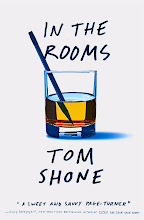These are actors,
As I foretold you, were all spirits and
Are melted into air, into thin air;
And, like the baseless fabric of this vision,
The cloud-capped towers, the gorgeous palaces,
The solemn temples, the great globe itself,
Yea, all which it inherit, shall dissolve,
And, like this insubstantial pageant faded,
Leave not a rack behind.
We are such stuff
As dreams are made on; and our little life
Is rounded with a sleep.
That could equally well describe Hugo, a Faberge egg of cgi-confabulation featuring its own magician-hero, cobwebbed with loss, who in a climactic act of remembrance, summons his own insubstantial pageants from thin air. What kids will make of it, I can only guess, although I suspect many will find their attention wandering, but as a Melies festshrift, a fond exhalation warming the embers of one filmmaker's work with the breath of another, it works its own brand of wonder, offering us another slice of the gamey neo-Jamesian style with which Scorsese seems to make movies these days. In his review of Edward Said's On Late Style: Music and Literature Against the Grain in The New Yorker John Updike wrote:— What does haunt late works is the author’s previous works: he is burdensomely conscious that he has been cast, unlike his ingénue self, as an author who writes in a certain way, with the inexorable consistency of his own handwriting. Turning this way and that in his last creative torment, he kept meeting, with a shudder, his pet modes of imagining, chimeras on the fault line between the imaginary and the actual.
In other words, late works are haunted houses, characterised, as Hawthorne put it by “a drawing away of veils, a lifting of heavy, magnificent curtains". As the artist's imagination prepares for its final Check-Out, the vividness of lived experience recedes like a fading coal, veiled by a skein of remembrance and nestled within plots that unfurl like Russian dolls. "Late style is what happens if art does not abdicate its rights in favor of reality,” says Said. A perfect description of both Shutter Island and Hugo with their onion-layering of illusion, their urgent summoning of the dead, and air of mazy, elegaic confabulation. The dead are rescusitated, the past disinterred; there are even a few statues looking ominously like they are about to spring to life; the recurring imagery of ash and scattered papers act as vivid memento mori — a previsualisation of all that remains when we, too, are vanished. Scorsese's late period would appear to be firmly in session.




 I'm going to review Hugo properly later in the month but for now would like to note a few stylistic similarities I noticed with Shutter Island — the imagery of ash and scattered paper-storms, together with a preoccupation with artifice and loss which reminded me of Shakespeare's late romances, particularly The Winter's Tale, in which the statue of a wife, long thought dead, comes to life, much as Leo Di Caprio summons Michelle Williams in Shutter Island, and The Tempest, in which an exiled artist-magician conjures storms and monsters:—
I'm going to review Hugo properly later in the month but for now would like to note a few stylistic similarities I noticed with Shutter Island — the imagery of ash and scattered paper-storms, together with a preoccupation with artifice and loss which reminded me of Shakespeare's late romances, particularly The Winter's Tale, in which the statue of a wife, long thought dead, comes to life, much as Leo Di Caprio summons Michelle Williams in Shutter Island, and The Tempest, in which an exiled artist-magician conjures storms and monsters:—





















- What kids will make of it, I can only guess-
ReplyDeleteAlthough 'Hugo' itself is based on a YA novel (I remember when they were referred to in the publishing trade as "juveniles"), I don't understand the popular tendency to place a work centered on a young protagonist as being solely of interest to a an audience of "kids". 'Fanny & Alexander', anyone?
I had the chance to see Scorsese's student film, a short about a lonely man who leaves his drab, constrained urban existence behind by diving into a vivid photograph of the ocean and a beach.
ReplyDeleteSo much for the "reality" that art is invited to abdicate its rights for, according to Said. Somehow I doubt Scorsese ever had such an abdication in mind for his career, ever. There is always some kind of cinematic leading into a fantastic dream world, no matter how "real" or violent the setting or story.
If "Hugo" is late style, bring it on.
A few of Scorsese's films have featured kids as protagonists — Alice Doesn't Live Here Anymore, the first few scenes of Goodfellas (the film as a whole representing, said Scorsese, his 8-year-old self's view of the gangsters he grew up with), and Kundun. None of these presumed an audience of kids. But Hugo, which was adapted from a children's book and produced as a Christmas movie, is very much aimed at the younger audience. Not solely, but mostly.
ReplyDeleteyeezy shoes
ReplyDeletebalenciaga
retro jordans
yeezy boost 500
yeezy shoes
kyrie shoes
balenciaga
jordan shoes
adidas ultra boost
fila shoes
replica bags by joy replica bags south africa replica bags louis vuitton
ReplyDelete